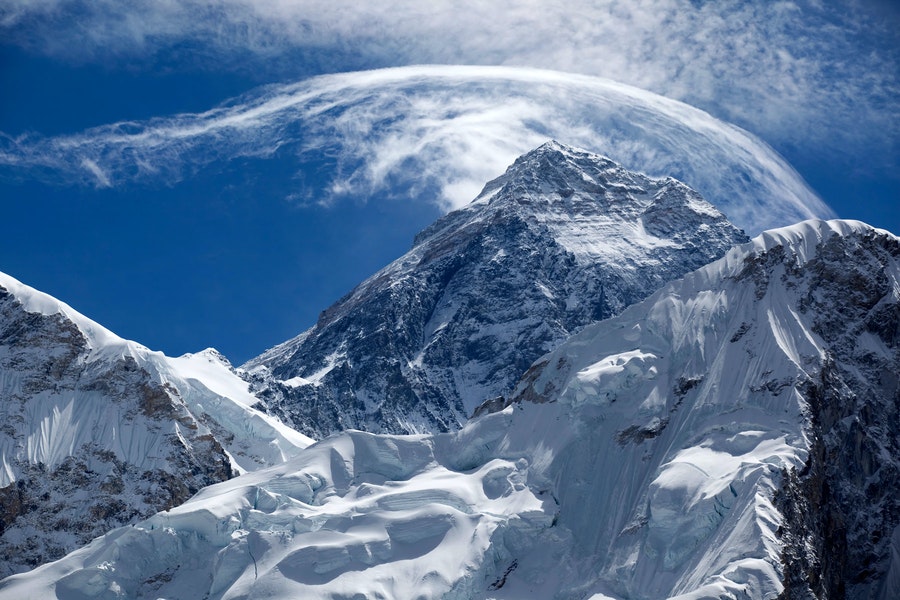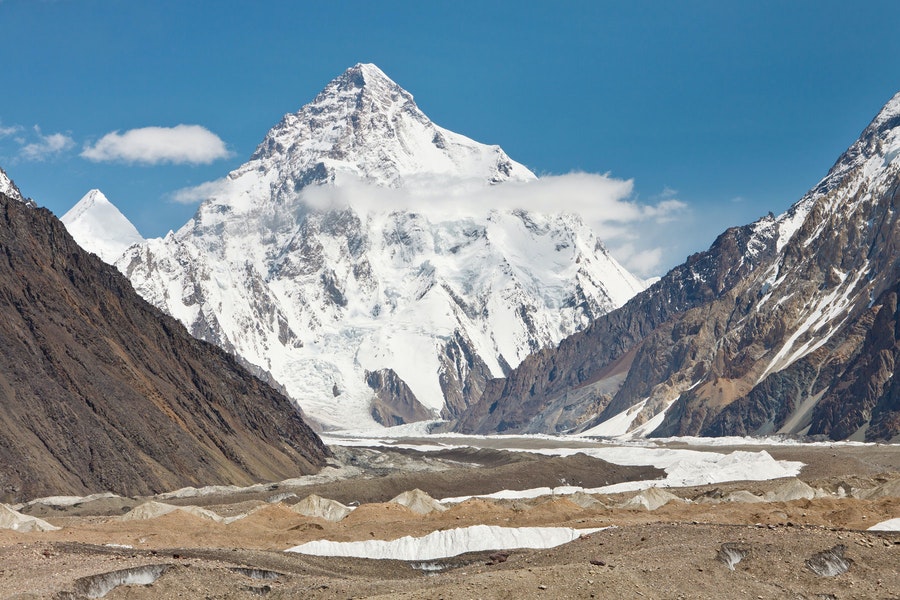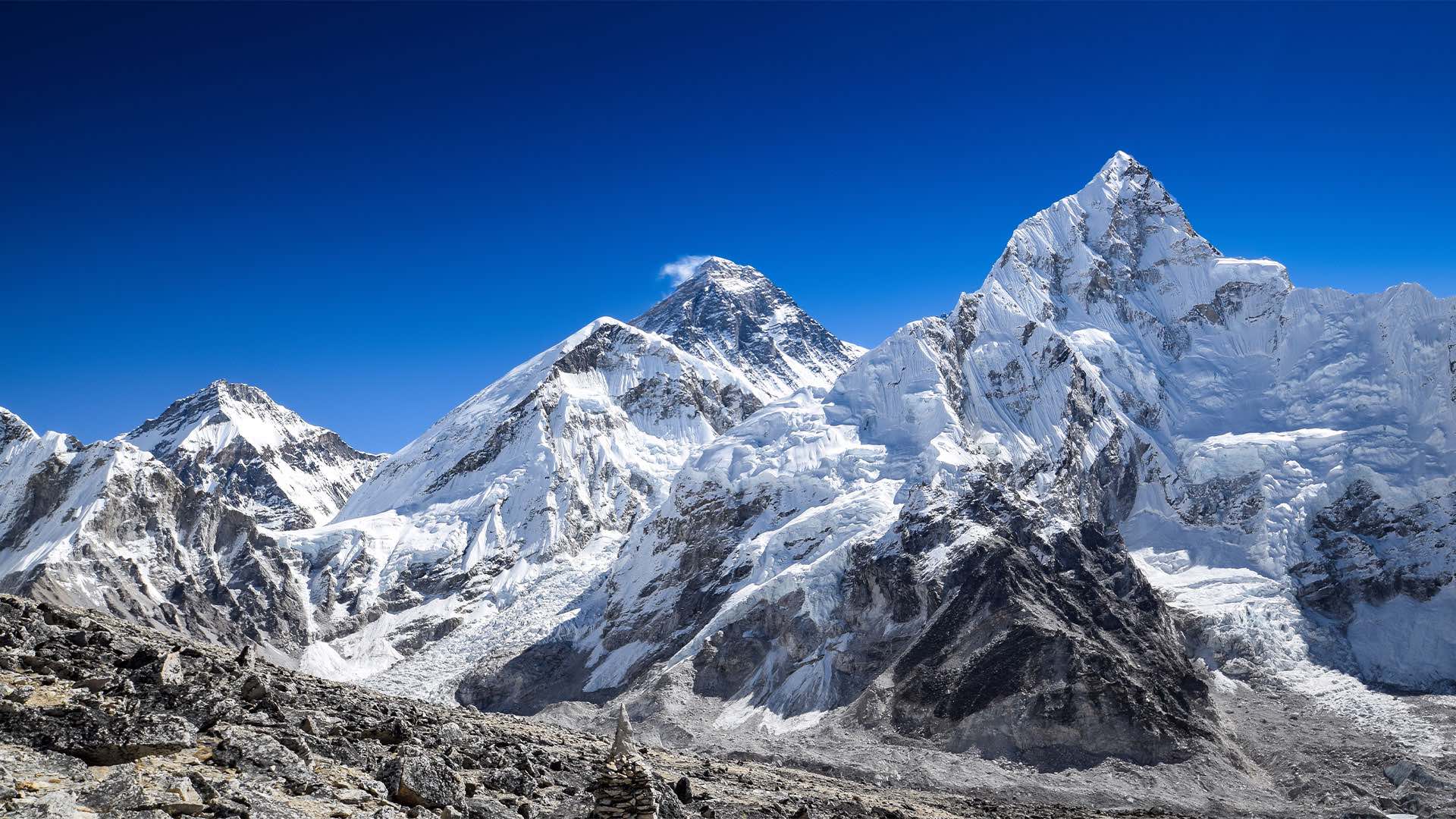What are the highest mountains in the world?
The highest mountain in the world is Mount Everest. It’s common knowledge, it’s mainstream, and it’s not much of a secret. Do you think know what the world’s second highest mountain is though? Or, for that matter, what the third, fourth, fifth, sixth, seventh, eighth, and ninth highest mountains in the world are. Exactly. That’s the sort of trivia only real mountaineering experts have. Well, the good news is that we’re here to help with this guide to the biggest mountains on earth.
We hope you find it useful.
1) Mount Everest

As we’ve already said, and as you already knew, Mount Everest is the highest mountain in the world. For a long time, its peak was thought to be an eye-watering 8,848 metres above sea level. This is well over eight times taller than the highest mountain in Wales (Snowdon, at 1,085 metres above sea level).
However, in December 2020 a new height for Everest was agreed. The summit of Mount Everest was confirmed to be 8,848.86m above sea level (8,849m, if you’re rounding). Not a huge difference in height, we think you’ll agree, but an interesting development in the world of mountaineering.
Everest is situated on the border between Nepal and the autonomous region of Tibet. Officially speaking, the first successful Everest climbers were Sir Edmund Hillary and Tenzing Norgay in 1953. It is estimated that there is well over 200 dead bodies on Everest, all of them remarkably well-preserved because of the extremely cold temperatures.
Everest is part of the Seven Summits. The Seven Summits is a list made up of the highest mountain on each of the world’s seven continents. Climbing all seven of the Seven Summits is one of the ultimate achievements in the sport of mountaineering.
In recent years, a lot has been made of overcrowding and human traffic jams on Everest. One photo in particular, taken by mountain climber Nirmal Purja in 2019, illustrated just how bad the problem with overcrowding has become. The dangers of queueing in Everest’s scary sounding ‘Death Zone’ has been underlined by last year’s higher than average death count on the mountain. Off the back of this grim year for climbing, we asked a number of mountaineers for their opinions on how they think the Everest overcrowding problem can be fixed.
2) K2

K2, also known officially as Mount Godwin-Austen or Chhogori, has a summit 8,611 metres above sea level. It is located on the border between China and Pakistan. The Chinese side of the mountain is widely considered to be the more difficult and hazardous side, so the summit is usually attempted from the Pakistan side.
Behind Annapurna, K2 has the second highest fatality rate of any mountain with a height over 8,000 metres. Approximately speaking, there’s one death for every four successful climbs; justifying its nickname as the “Savage Mountain.”
In January 2021, Nirmal ‘Nims’ Purja and his Nepalese team became the first people to summit K2 in winter. Many mountain climbers had attempted this extreme challenge before, many had failed. Nims wrote on social media after achieving his goal: “History made for mankind, history made for for Nepal.”








